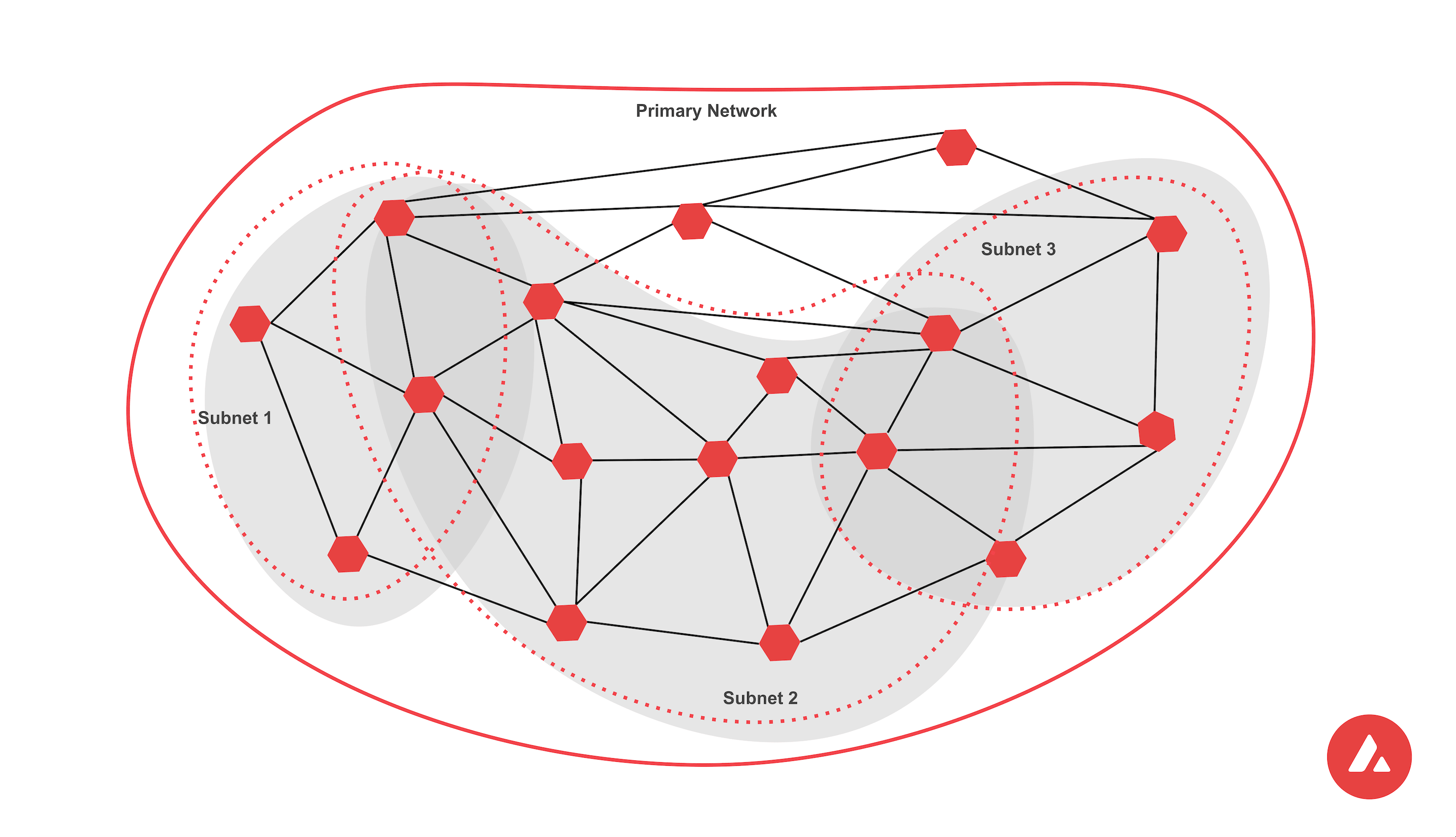Subnets Exploration Tool
What Is a Subnet?
A Subnet is a sovereign network which defines its own rules regarding its membership and token economics. It is composed of a dynamic subset of Avalanche validators working together to achieve consensus on the state of one or more blockchains. Each blockchain is validated by exactly one Subnet, while a Subnet can validate many blockchains. Node operators that validate a Subnet with multiple chains do not need to run multiple machines for validation. For example, the Primary Network is a Subnet with three coexisting chains, all of which can be validated by a single node, or a single machine.
Advantages
-
Subnets use virtual machines to specify their own execution logic, determine their own fee regime, maintain their own state, facilitate their own networking, and provide their own security.
-
Each Subnet's performance is isolated from other Subnets in the ecosystem, so increased usage on one Subnet won't affect another.
-
Subnets can have their own token economics with their own native tokens, fee markets, and incentives determined by the Subnet deployer.
-
One Subnet can host multiple blockchains with customized virtual machines. [Source]

Introduction to Avalanche Subnets
Most people know Avalanche as an EVM-compatible blockchain that has gained significant traction. However, there is much more to Avalanche, including many more blockchains!
Many Avalanche users are only familiar with the C-Chain, which forked the Ethereum Geth client to add support for the Ethereum Virtual Machine (EVM), but there are actually 3 chains in Avalanche’s Primary Network. But in addition, one of Avalanche’s core innovations is the ability to create highly scalable and customizable blockchains called Subnets.
With limited blockspace and demand rising, fees have risen on the C-Chain. And while there are improvements that can be made, scaling to meet demand requires more blockspace or more efficient use of existing blockspace (i.e. off-chain computation via Layer 2s). Subnets are Avalanche’s solution to this problem.
Instead of forcing all transactions to take place on a single, shared state, Subnets allow developers to launch their own blockchains– creating more blockspace and computation to meet demand. [Source]
